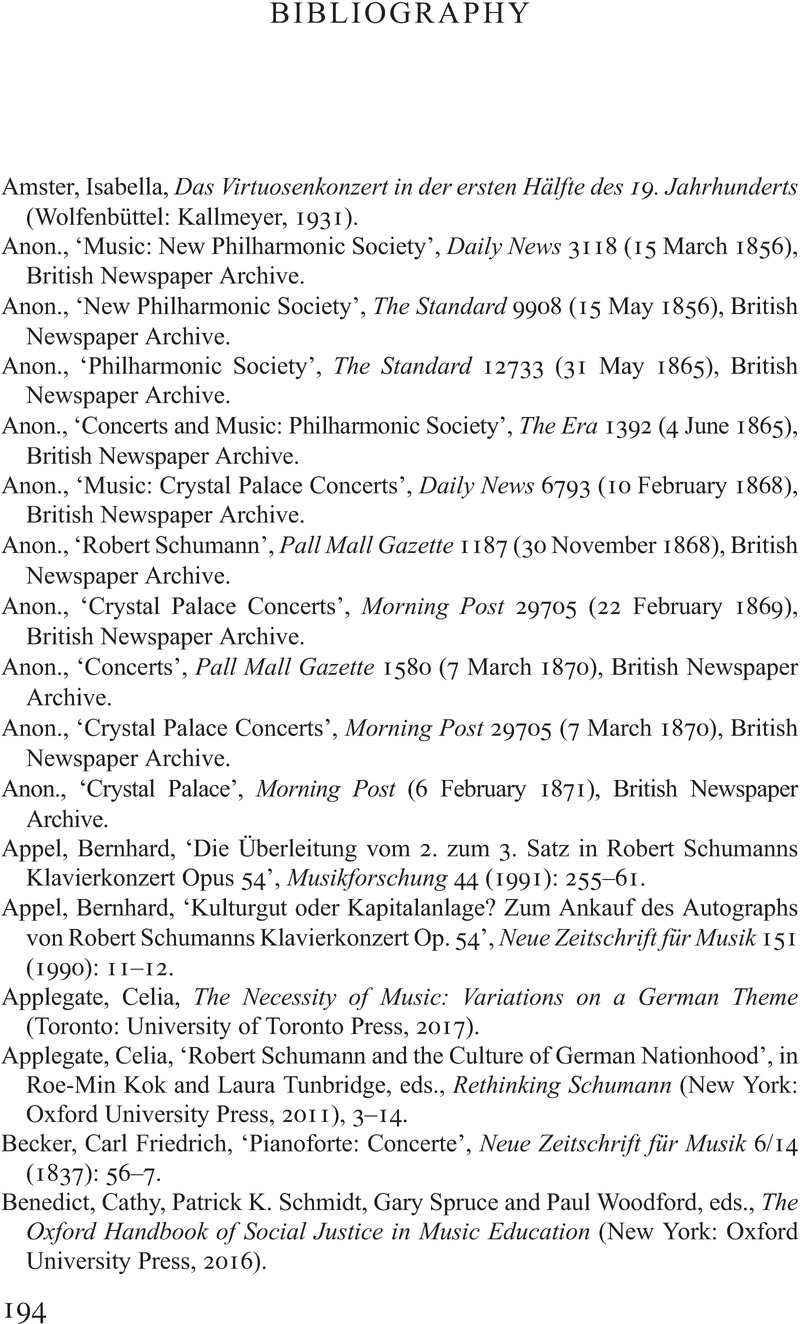Book contents
- Robert Schumann: Piano Concerto
- New Cambridge Music Handbooks
- Robert Schumann: Piano Concerto
- Copyright page
- Dedication
- Contents
- Figures
- Tables
- Music Examples
- Acknowledgements
- Introduction
- 1 Rethinking the Romantic Piano Concerto
- 2 The Genesis of Schumann’s Piano Concerto
- 3 Analysis (1): The First Movement
- 4 Analysis (2): The Slow Movement and Rondo Finale
- 5 Reception and Legacy
- Book part
- Bibliography
- Index
- References
Bibliography
Published online by Cambridge University Press: 30 November 2023
- Robert Schumann: Piano Concerto
- New Cambridge Music Handbooks
- Robert Schumann: Piano Concerto
- Copyright page
- Dedication
- Contents
- Figures
- Tables
- Music Examples
- Acknowledgements
- Introduction
- 1 Rethinking the Romantic Piano Concerto
- 2 The Genesis of Schumann’s Piano Concerto
- 3 Analysis (1): The First Movement
- 4 Analysis (2): The Slow Movement and Rondo Finale
- 5 Reception and Legacy
- Book part
- Bibliography
- Index
- References
Summary

- Type
- Chapter
- Information
- Robert Schumann: Piano Concerto , pp. 194 - 200Publisher: Cambridge University PressPrint publication year: 2023

